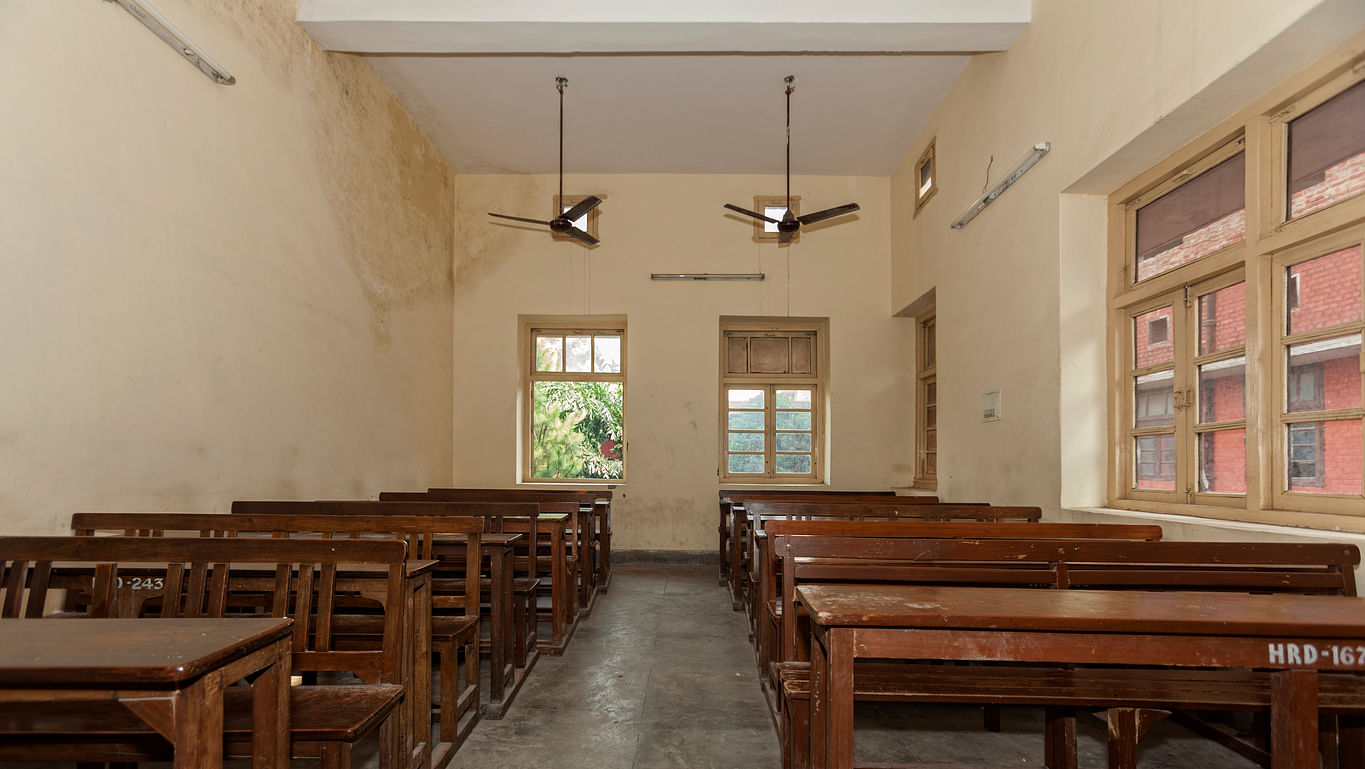
Representative image of a classroom
Credit: iStock Photo
The state of higher education in Karnataka is being debated in academic circles. Let me begin my analysis of it with a quote from Charles Darwin: To kill an error is as good a service and sometimes even better than establishing a new truth or fact. This should be the guiding principle for any administration aiming to rejuvenate societal systems in general and higher education (HE) in particular. Instead of getting bogged down by politically charged statements and counter-statements, let us take remedial measures to address the issues. In this task, we should follow the recommendations of vision groups and policymakers. While new policies are conceived in committee/board rooms, it is ultimately academic institutions that must translate these recommendations into reality. Until this is understood, recommendations remain a pipe dream. With the hope that the state of higher education in Karnataka will move towards a qualitative trajectory, I offer a few suggestions.
Within the State, policymakers need to delve deep into the ecosystem to understand the ground realities. Allow me to highlight a few issues affecting state public universities. Firstly, the Karnataka State University Act of 2000 needs a comprehensive overhaul to address contemporary issues in higher education. While the ‘jurisdiction of universities’ can be limited to affiliation and examination purposes, student admissions to different programmes should be open across jurisdictional barriers to facilitate student mobility, including provisions for credit transfers among institutions and faculty mobility across universities and interinstitutional collaborations for both teaching and research. To avoid in-charge VCs, the Act should stipulate that the procedures for the appointment of new vice chancellors commence three months ahead of the retirement of the present incumbent, allowing outgoing and incoming VCs to exchange notes.
The Act may also specify criteria for the appointment of statutory officers, such as registrar administration, registrar evaluation, and finance officer. With these guidelines, the VC should have the freedom to select the members of his ‘team’ with the due approval of the Syndicate. Another issue of serious concern is the composition of the statutory bodies of the university, such as the Syndicate, Academic Council, Finance Committee, etc. Men and women of experience and expertise from academia should be nominated or appointed to such bodies. The Act has to lay down in unambiguous terms the prerequisites for such memberships.
Qualified faculty is the backbone of an academic institution. But sadly, the backbone is not in a position to bear the weight of teaching and research. With nearly 60% to 70% of faculty positions vacant, the victims are the students and teaching and research programmes. Due to the sustained contributions of many senior faculty over decades, some departments in some universities have attained the status of advanced research centres, but even they are unable to sustain it as many of the senior faculty have retired. Therefore, the Act should stipulate a definite time line for filling up of vacancies and also minimise the ad-hoc appointments of guest lecturers.
The State universities have been in existence for different lengths of time. The range may be from century-old universities to just-born ones with or without facilities. Each of these has inherited and is confronted with different institutional problems. The Act should suggest that instead of ‘one size fits all policies’, institution-specific and/or issue-specific remedial measures be articulated.
Regarding the Karnataka State Higher Education Council, its existing mandate deserves review, along with an evaluation of the council’s performance, which is perceived as an extension of the higher education department. To strengthen its functioning, the Council Act needs amendments. Some of the suggestions include:
1. The Council should be an autonomous body with a well-known academician as chairman, vice chairman, and executive secretary.
2. These positions should
be filled through a transparent process of selection
and not by nomination by the government.
3. The Council should have a well-defined organisational structure with defined positions to act as an interface between universities/colleges and the government.
4. The Council can also act as a ‘Policy Centre for Higher Education,’ serving as an ‘Advisory Body’ to the government.
Parallelly, each of the 26 private universities in the state has an independent Act.
How the government can facilitate the functioning of these institutions is a topic for another article.
(The writer is a former director of NAAC and a former VC of Bangalore University)